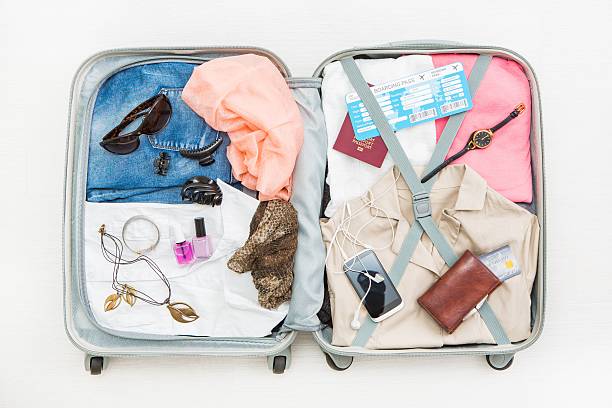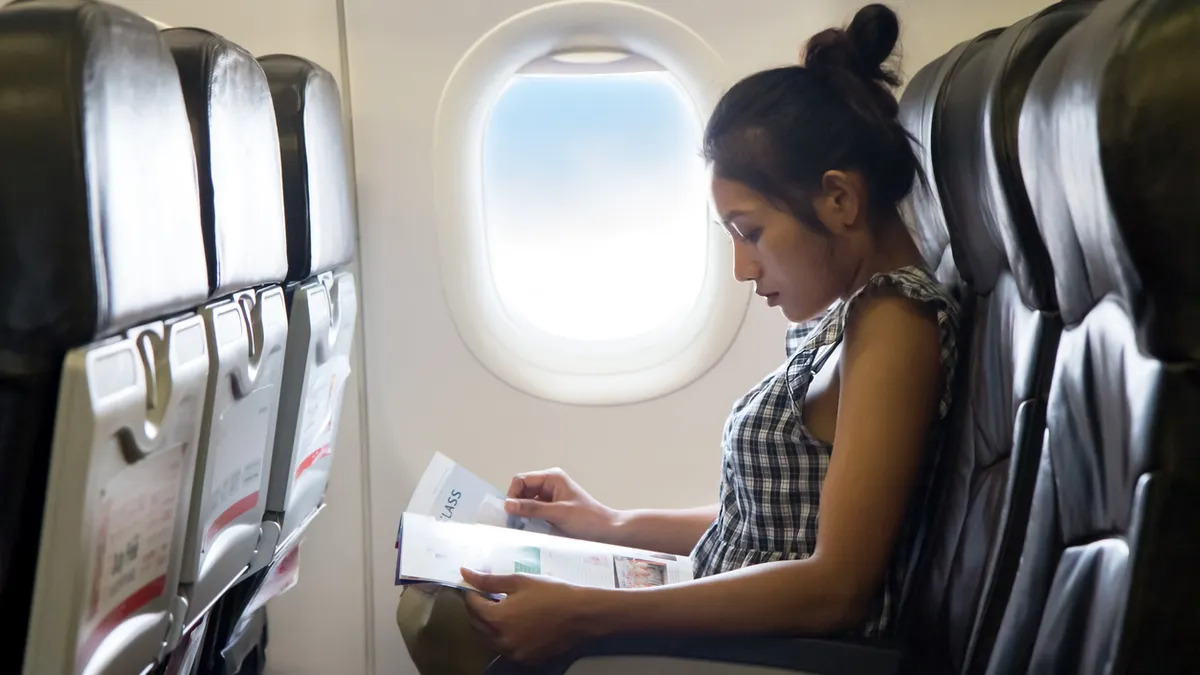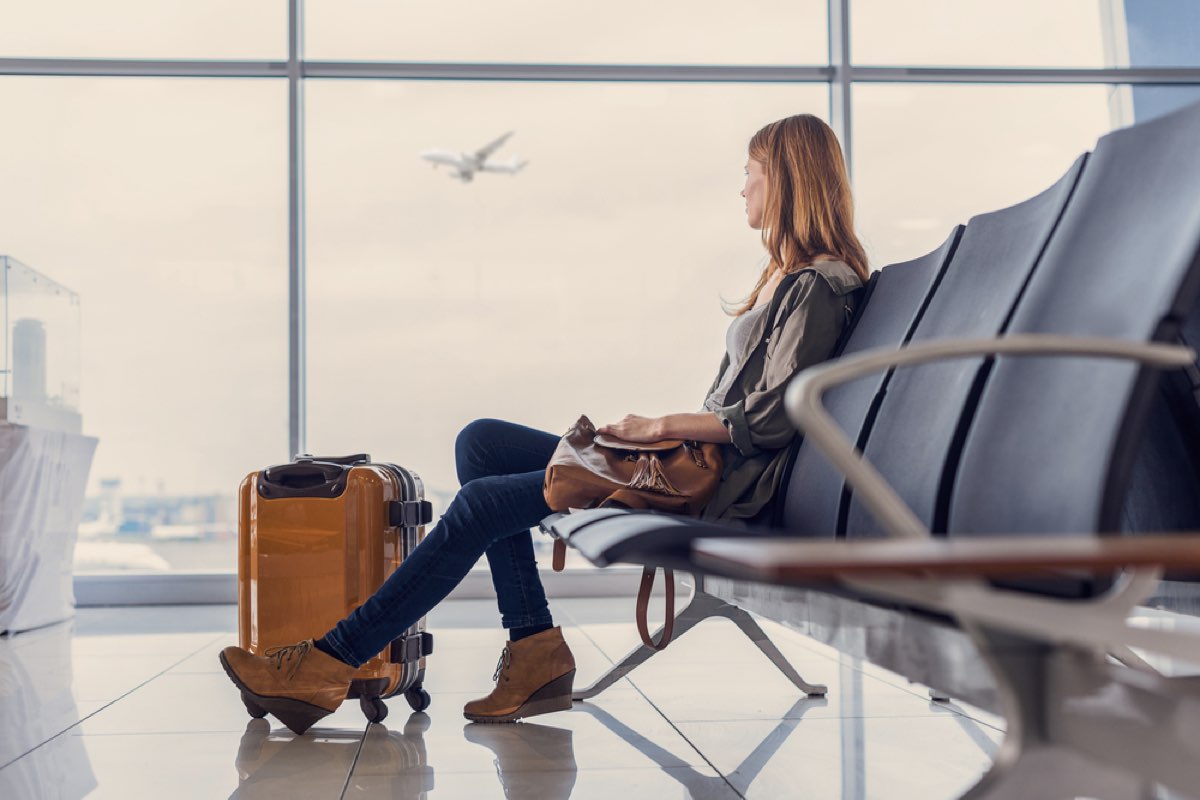Beginners Guide To Airports And Flying
Discover the ultimate beginners guide to airports and flying. Get valuable tips for a smooth journey, from packing essentials to navigating security checks and in-flight comfort.
Author:Jane RestureDec 25, 202319.1K Shares308.1K Views

Air travelhas revolutionized how we connect globally, making distant places accessible and bridging cultural divides. For first-time flyers, navigating the maze of airports and airplanes can be daunting. For those new to flying or looking to enhance their travel knowledge, this comprehensive guide is designed to navigate you through every step of your journey with confidence.
Our beginners guide to airports and flyingis packed with insider tips and practical advice, taking you from the basics of booking your flight, through the nitty-gritty of airport check-ins, all the way to what to expect in the air. So, buckle up and get ready for a smooth takeoff into the world of flying!
Booking Your Flight
Booking a flight is a pivotal first step in your travel adventure. It involves a series of thoughtful considerations and actions:
- Destination and Date Selection - Start by deciding where and when you want to travel. Flexibility with dates can sometimes lead to more affordable options.
- Research and Comparison -Explore various airlines and travel websites to compare flights. Factors like layovers, flight durations, and total travel time are as crucial as the ticket price.
- Airline Reputation and Reviews -Look into airline reviews for reliability, customer service, and overall experience.
- Understanding Fare Types -Be aware of different fare types offered by airlines, each with varying levels of flexibility, baggage allowances, and cancellation policies.
- Baggage Policies -Check the airline's baggage allowance, including size and weight limits for both checked and carry-on luggage. Overlooking this might result in unexpected fees.
- Loyalty Programs and Deals -Consider joining airline loyalty programs for potential perks and discounts.
- Finalizing the Booking -Once you find a suitable flight, proceed to book. Ensure your name and personal details match your ID and passport. Double-check the flight dates and times before confirming.
- Payment and Confirmation -Complete the transaction with a secure payment method. Always wait for a confirmation email or message ensuring your booking is complete.
Remember, booking flights is more than just finding the cheapest ticket; it's about balancing cost, convenience, and comfort to ensure a pleasant journey.
Packing And Preparation
When preparing for a flight, effective packing is key. It begins with a clear understanding of the airline's baggage policy, noting the allowed size, weight, and number of bags to avoid extra fees. Essential items to pack include:
- Travel Documents- Passport, ID, visa, and flight tickets.
- Electronics and Chargers- Mobile phone, laptop, camera, and their respective chargers.
- Medications- Necessary prescription medicines with documentation, if required.
- Clothing- Pack according to your destination's climate and cultural norms.
- Liquids- Follow the aviation security rule of 100ml per container, placing all in a transparent, resealable bag. This includes toiletries like toothpaste, shampoos, and creams.
Additionally, consider the type of activities planned at your destination to ensure you have everything needed. It's also wise to leave some space for souvenirs or purchases made during your travels.
Airport Check-In And Security
Efficient check-in and security processes are essential for a smooth airport experience. Utilize online check-in, available 24 hours before departure, to select seats and print boarding passes, avoiding airport queues and switching seats on a flight. For airport check-in, especially with luggage, arrive well ahead of your flight time.
Security procedures require attention to detail:
- Remove all metal objects, electronics, and liquids from carry-on bags for screening.
- Be ready to pass through metal detectors or body scanners.
- Adhere strictly to the instructions of security staff for a hassle-free process.
Boarding And The In-Flight Experience
Before boarding, it's crucial to check the airport's flight information screens for your gate number and the scheduled boarding time. Airlines often board passengers in specific zones or groups, which are usually announced over the airport's PA system. Staying attentive to these announcements ensures you board the aircraft in a timely manner.
Onboard The Plane
Once onboard:
- Locating Your Seat -Find your assigned seat as indicated on your boarding pass. It's important to store your carry-on luggage either in the overhead compartment or under the seat in front of you.
- Safety Protocols -As you settle in, fasten your seatbelt. Pay close attention to the flight attendants as they demonstrate the safety procedures. This is crucial for your safety and preparedness in case of emergencies.
In-Flight Experience
During the flight:
- Entertainment and Comfort -Airlines often provide various forms of in-flight entertainment, such as movies, music, or magazines. Engaging in these can make your flight more enjoyable.
- Refreshments -Take advantage of the refreshments served during the flight. This could range from snacks and beverages to full meals, depending on the airline and the duration of the flight.
- Following Cabin Crew Instructions -Always follow the instructions and guidelines provided by the cabin crew. Their directives are aimed at ensuring passenger comfort and safety throughout the flight.
Post-Flight Procedures
After the flight lands, patience is key. Remain seated until the aircraft completely stops and the seatbelt sign is turned off. Exiting the plane in an orderly manner ensures safety and efficiency for all passengers.
Baggage Claim
At your destination:
- Finding Your Luggage -Follow airport signs to the baggage claim area. This is usually indicated on the information screens.
- Luggage Identification -Use luggage tags to quickly identify your bags on the carousel.
- Dealing with Luggage Issues - In case of missing or damaged luggage, head straight to the baggage service counter to report the issue. Prompt reporting is crucial for quick resolution.
Key Tips For Traveling
To ensure a seamless journey when traveling by air, consider the following key tips:
- Luggage Requirements- Familiarize yourself with your airline’s luggage policies. This includes size and weight limits for both checked and carry-on baggage to avoid unexpected fees.
- Carry-On Essentials- In your carry-on bag, pack items that are hard to replace. These might include important documents, medications, and a change of clothes. Follow TSA guidelines, especially for liquids and electronics.
- Early Airport Arrival- Arrive at the airport with ample time before your flight; generally, two hours for domestic and three hours for international flights.
- Security Preparation- Have your ID ready for security checks and wear shoes that are easy to remove. This expedites the screening process.
- Respecting Fellow Passengers- On the plane, be mindful of the shared space. This includes using overhead bins considerately and keeping noise to a minimum.
- Emergency Planning- Be prepared for unforeseen circumstances like flight delays or cancellations. Have a backup plan, including knowledge of alternative flights and accommodations.
These steps help in creating a stress-free and enjoyable travel experience.
Sample Detailed Checklist For Air Travel
Want a sample checklist as a guide? Here's a simple checklist to get you flying to your dream destination:
Pre-Flight
- Pack hand sanitizer, masks, and disinfectant wipes to maintain hygiene during your journey.
- Include necessary medications with prescriptions in your carry-on bag for easy access.
- Weigh your luggage on a digital scale to ensure it meets the airline's weight requirements.
- Label your luggage with contact information, including your name, phone number, and email address.
- Double-check and confirm your flight timings to avoid any last-minute surprises.
- Ensure your passport, visa, and ID are valid and easily accessible in a dedicated travel wallet.
At the Airport
Keep a close eye on flight status by using airline apps or airport information screens.
- Have your boarding pass and ID ready for quick and hassle-free check-in.
- Arrive at the airport well in advance to allow time for check-in and security procedures.
- Prepare for security checks by placing liquids in a clear, quart-sized, resealable plastic bag.
- Keep electronic devices easily accessible to facilitate the security screening process.
Boarding
Check your boarding pass for your assigned gate and departure time.
Listen for boarding announcements and follow instructions regarding boarding zones or groups.
In-Flight
Download movies, music, or books onto your electronic devices for in-flight entertainment.
- Pack a variety of snacks or a meal, especially for longer flights, to satisfy your hunger.
- Wear comfortable clothing, including layers, to adapt to changing cabin temperatures.
- Choose comfortable and supportive shoes to keep your feet at ease during the journey.
- Carry a travel pillow to ensure a more restful nap during the flight.
- Earplugs can help you block out noise, and an eye mask aids in sleeping or resting.
Post-Flight
Confirm your transport arrangements from the airport, whether it's a rental car, shuttle service, or public transportation.
- Keep your hotel or accommodation details easily accessible in your travel wallet.
- Double-check the baggage carousel number to collect your checked luggage efficiently.
- Inspect your luggage for any damage upon receipt, and report it to the airline if necessary.
This comprehensive and detailed checklist covers every aspect of your air travel experience, ensuring that you are well-prepared for a smooth and organized journey. You can further customize it based on your specific preferences and travel requirements. Safe travels and enjoy your trip!
Beginners Guide To Airports And Flying FAQs
What Should I Do If I'm A First-Time Flyer?
If you're new to flying, don't worry. Arrive at the airport early to avoid stress. Follow signs, listen to announcements, carry essential documents, pack lightly, and stay hydrated during your journey.
What Travel Documents Do I Need?
Ensure you have the necessary travel documents, including your passport, visa (if required), and a valid photo ID. Check their expiration dates and make sure they comply with your destination's requirements.
How Can I Make Airport Check-In Smooth?
To streamline the check-in process, use online check-in if available. Arrive early, especially if you have checked luggage. Prepare for security checks, including removing liquids from your carry-on.
What Can I Bring In My Carry-On?
When packing your carry-on, follow TSA guidelines. Include essential items like medications, snacks, and electronics. Remember that liquids should be in containers of 100ml or less, placed in a clear, resealable bag.
What Should I Wear For The Flight?
Choose comfortable clothing and consider dressing in layers to adapt to changing cabin temperatures. Wear easily removable shoes for security checks, and bring a travel pillow and an eye mask for rest.
How Do I Pass Through Airport Security Quickly?
Efficiently navigate airport security by keeping your ID accessible. Place metal objects and electronics in bins, and remove liquids from your carry-on. Always follow the instructions of security staff.
What Happens During The Boarding Process?
After clearing security, consult the flight information screens to find your gate number and boarding time. Airlines typically board by zones or groups, so listen for announcements and be ready to board when your group is called.
What Can I Expect On The Plane?
Once onboard, locate your assigned seat, stow your carry-on luggage in the overhead compartment, and fasten your seatbelt. Pay attention to the safety instructions provided by the flight attendants. During the flight, enjoy the in-flight entertainment and refreshments. Follow any guidelines given by the cabin crew.
What Should I Know About Baggage Claim?
Upon landing, wait until the aircraft comes to a complete stop and the seatbelt sign is turned off before standing. Follow signs to the baggage claim area and use luggage tags for easy identification of your bags. If your luggage is missing or damaged, report it to the baggage service counter promptly.
Any Tips For A Smooth Journey?
To ensure a seamless travel experience, consider these tips: Check your airline's luggage policies to avoid extra fees, pack essential items in your carry-on following TSA guidelines, arrive at the airport early, prepare for security checks, be considerate of fellow passengers, and have a backup plan in case of unexpected flight changes or cancellations. These steps will help you navigate airports and fly with ease.
Now Fly To Your Destination
Embarking on your first flight may seem like a whirlwind of confusion, but with the right knowledge and preparation, it can be a breeze. Our beginner's guide to airports and flying has provided you with essential insights, from booking your flight to navigating airports, security procedures, and in-flight experiences.
So there you have it, a beginner's roadmap to navigating airports and flying with ease. As you embark on your journeys, remember that every flight is a chance to explore, learn, and create lasting memories. With this guide in hand, you're all set to take off and make your adventures in the sky truly remarkable. Bon voyage!

Jane Resture
Author
Since she embarked on her first world trip in 2002, Jane Resture spent the past decades sharing her personal journey and travel tips with people around the world. She has traveled to over 80 countries and territories, where she experienced other cultures, wildlife she had only read about in books, new foods, new people, and new amazing experiences.
Jane believes that travel is for everyone and it helps us learn about ourselves and the world around us. Her goal is to help more people from more backgrounds experience the joy of exploration because she trusts that travel opens the door to the greatest, most unforgettable experiences life can offer and this builds a kinder, more inclusive, more open-minded world.
Latest Articles
Popular Articles


